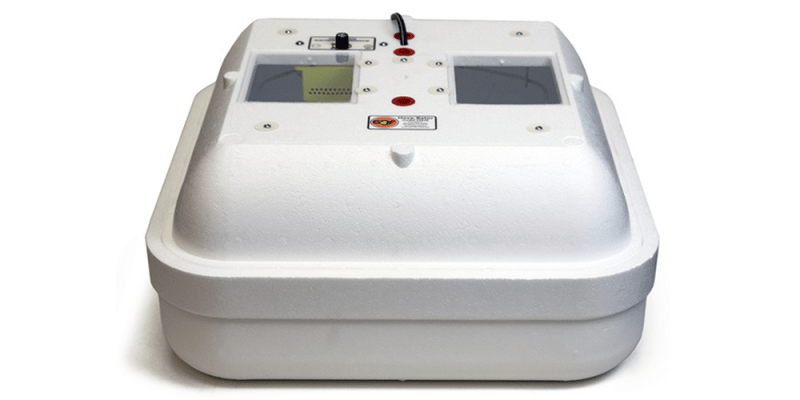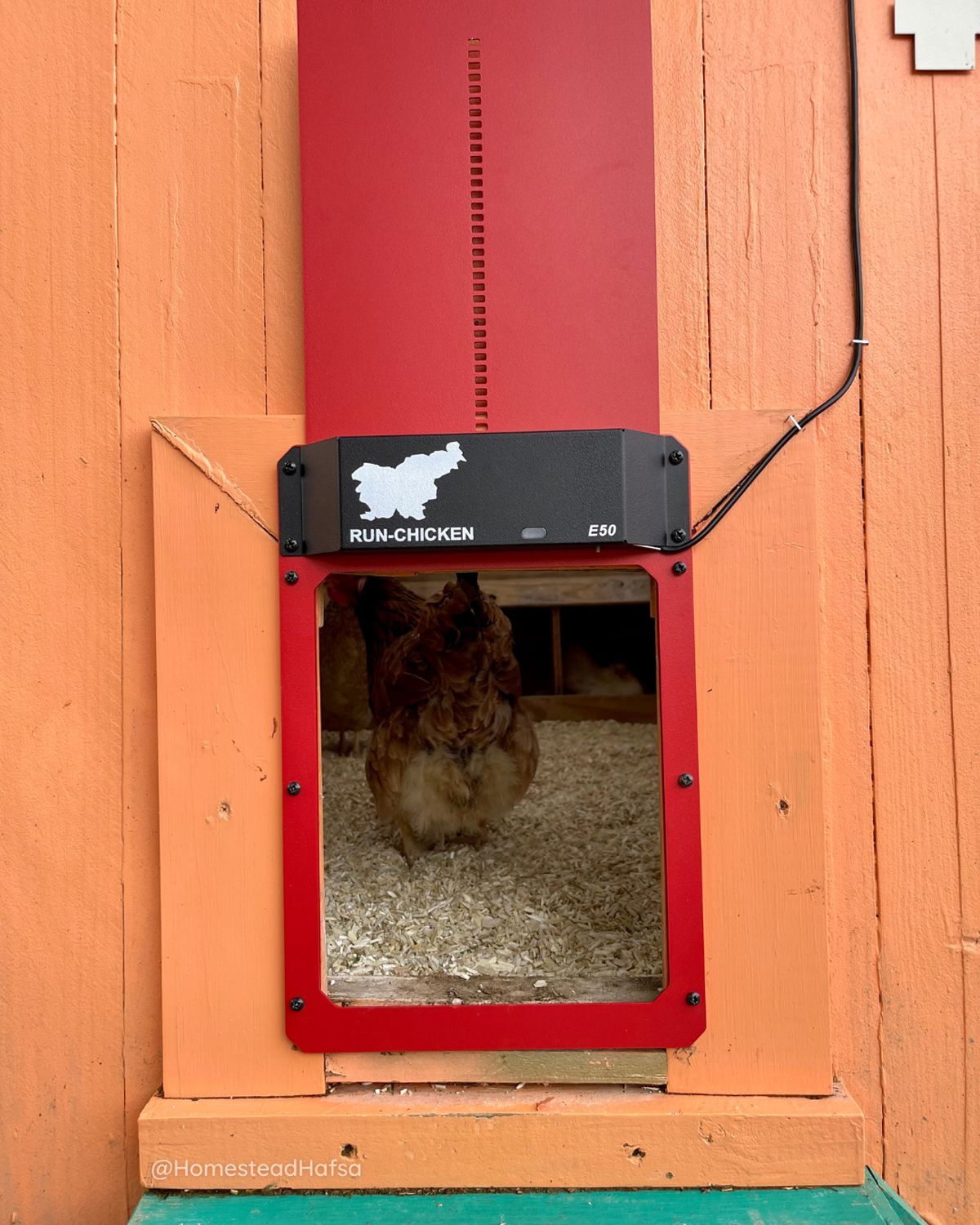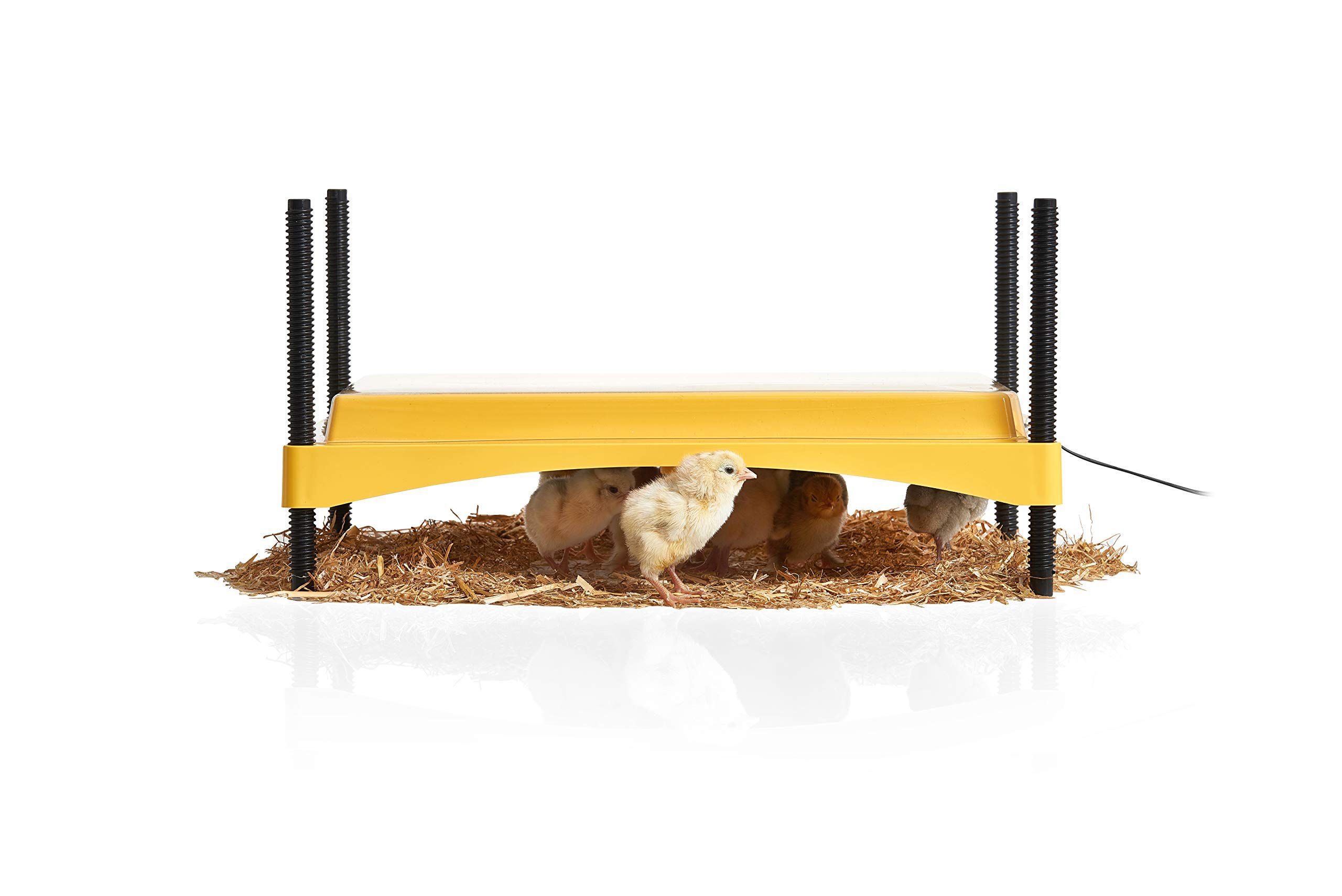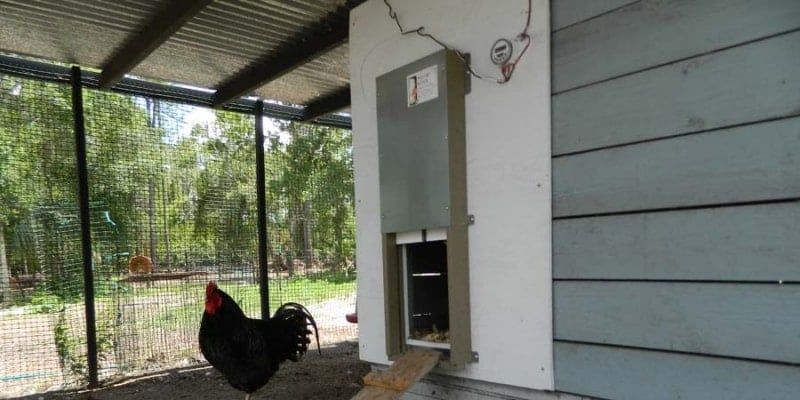Review: GQF Model 2362E Incubator


Having used Styrofoam incubators with mixed results in the past, I wasn’t sure what to expect from GQF’s 2362E Electronic Thermostat Hova-Bator.
Once the GQF incubator with the automatic egg turner arrived, I read the directions several times and set it up accordingly. The first thing I noticed was that it was made from a thicker, better quality Styrofoam than my old incubator. It also included several useful accessories such as a plastic liner with built in water troughs, a wire floor with a easy-to-clean coating, owl clips to attach the wire floor to the plastic liner, and a thermometer.
After I placed the assembled liner and wire floor in the bottom of the incubator and filled the troughs with water, I was ready to position the automatic egg turner inside the incubator. The turner is capable of holding up to 41 eggs of various sizes ranging from tiny quail eggs on up to large goose eggs. After checking to make sure that I had it set for chicken eggs, I placed the turner in the incubator with the electrical cord exiting through the provided space.
I plugged in both the turner and the incubator and placed the thermometer on top of the turner to keep track of the temperature and adjust if needed. Once it reached the correct temperature, I didn’t have to touch the thermostat again—with the help of the internal fan to circulate air, the incubator held the chosen temperature throughout.
For my first use of the incubator, I chose 7 Rhode Island Red and 15 Leghorn eggs from my own flock. I also purchased 10 Blue, Black, and Splash Marans eggs online that arrived just in time. I know there is always a risk of shipped eggs not hatching since you do not know how well they traveled, but I was willing to take the chance. I let them rest for a day before setting all the eggs. Then, on the day I placed the eggs in the incubator, I found two Old English Game Bantam eggs in one of the coops, so I added them, too, for a total of 34 eggs.
With my old incubators, I had to turn the eggs by hand at least three times a day for the first 18 days of incubation, a time consuming task that always made me feel guilty if I forgot. With the GQF automatic egg turner, I was set free from all the extra work of turning along with the feelings of guilt when I forgot to turn them—it was great!
All I really had to do was to check and make sure there was water in the plastic tray to keep the humidity at the proper level. It seemed almost too easy—I kept thinking “Am I doing everything I’m supposed to?” It turns out I was doing my part and I was hoping the GQF was, too.
I typically like to see how the eggs are developing, so on the sixth day I candled a few. To my surprise, every egg I candled contained a developing chick. The Marans eggs, with their darker brown shell, are always hard to candle, so I gave them a pass.
Even with several days of crazy temperature fluctuations with highs in the 80s and lows into the 30s outside overnight over the 21 day incubation period—which of course affected our indoor temperatures—the GQF stayed very consistent, even though the instructions suggest keeping it in a room with a constant temperature.
Once I reached day 18, it was time to take the automatic egg turner out. I also decided to candle all the eggs and see what I could see when removing them from the turner. With the exception of the three shipped Marans eggs, every egg was filled in, dark, and seemed to have a chick in it. I could tell that those three were clear and had not developed at all. Still, I was happy with the progress so far.
We were getting down to the final stretch and the chicks were due to hatch on a Sunday. Saturday afternoon, I heard the first chick chirping from inside the GQF—always an exciting time. I looked in the handy windows on the top of the incubator and could see the “pip,” or small hole the chick makes in the egg shell to catch it’s first breath from the outside world.
After the chicks make the initial crack or hole in the shell, they rest for awhile to gain their strength before “unzipping” the large end of the egg so the they can get out. Several more chicks then “pipped” Saturday evening.
I had my brooder cage all set up with fresh bedding, a little feed, water mixed with electrolytes and probiotics, and a chick heater to keep them warm after they hatched. I woke up early Sunday to find the first chick had hatched and was already almost completely dry, cute, and fluffy—a light brown Leghorn.
Next was a Rhode Island Red. The chicks continued to hatch all day long with great results. Then one of the Old English Game Bantams hatched, followed by the Marans—I was truly blessed and impressed with the GQF.
I worried that opening the lid every once in a while to get the newly hatched chicks out would lower the humidity, so I did it quickly, although it didn’t seem to cause a problem. Still, GQF recommends you leave the chicks in until they all hatch.
Out of all the eggs that I set—except for the three clear Marans eggs—all but two hatched: another one of the Marans and an Old English Game Bantam egg. I was thrilled with the results. It was one of the best hatches I’ve ever had.
After the hatch was done, clean up was very easy. I threw away all the empty shells and took the plastic liner out, shook-off the shell fragments, wiped it off, and placed it back in the GQF and got ready to set more eggs.
If you are looking for a table top incubator, I would recommend the GQF 2362E Electronic Thermostat Hova-Bator. I would also highly recommend purchasing the automatic egg turner since it made the process so much easier. I enjoyed using it and all those fluffy little chicks brought a smile to my face.
GQF MANUFACTURING
2343 Louisville Rd.
Savannah, GA. 31415-1619
912-236-0651
www.gqfmfg.co
Tags:Real Reviews

Chicken Whisperer is part of the Catalyst Communications Network publication family.











